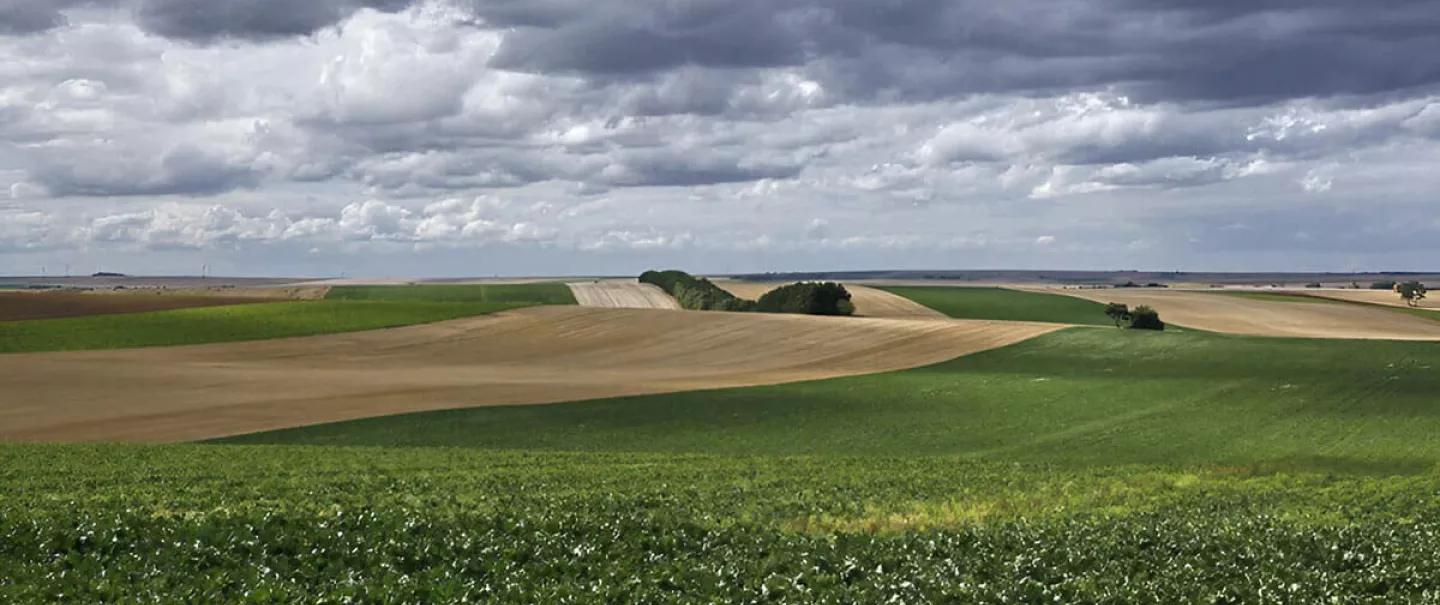
Min-till for the majority of field crops
Minimum cultivation techniques are adapted to most field crops, although spring crops can be tricky....
Min-till differs from direct drilling, which comprises of no soil preparation between harvest and seeding the next crop, by tilling the plot at least once between these 2 steps. And compared to a soil preparation technique that includes the plough, min-till is less intensive and does not mix the soil’s different layers.
Stubble cultivation can be carried out after harvest as part of a min-till method. Stubble cultivation boosts the decomposition of harvest residues or plant cover, as well as helping with weed control, airing the soil, and improving its structure, all of which facilitate seeding the following crops. Working depth will depend on the type of stubble cultivator used (with discs or tines).
Changing to min-till requires investing in a new seed drill that is adapted to the method. It has to be capable of both preparing the seedbed and delivering the seed. At KUHN, two ranges of seed drill are available to farmers in different widths.
Seed drills in the ESPRO range can be used on ploughed soil as well as on stubble or cover. The double row of discs at the front of the machine destroys soil cover to create a surface mulch. The discs boost the decomposition of plant cover while conserving the organic matter on the surface. Consequently, ESPRO seed drills allow you to work fast and efficiently with high work output and good quality soil preparation.
The MEGANT seed drill is equipped with 4 rows of staggered tines, spaced at 40 cm, for better passage in plant residues. With a working width of 6 m, it is possible to plant crops quickly and uniformly on ploughed or min-tilled land. It features a large hopper that can seed up to 60 hectares of wheat per day. It is a lighter machine than the ESPRO seed drill, and particularly well suited to dry land due its method of tilling and seeding that conserves the soil’s humidity.
Unlock versatily in all soils with min-till seed drill MEGANT
As with direct drilling, eliminating the plough as part of a minimum cultivation method will improve fertility and regenerate soil life. Earthworms and micro-organisms will gradually recolonise the soil and contribute to improving its structure. In addition, reducing the number of passes and especially using lower-consumption tools will lead to fuel savings.
The delicate question of weed control remains, but in the case of min-till, there are more ways of managing them, such as mechanical weeding or shallow tillage to encourage weed emergence in order to destroy them more effectively. As with direct drilling, a long and diversified rotation is key to preventing too many weeds.

Minimum cultivation techniques are adapted to most field crops, although spring crops can be tricky....

Direct drilling and min-till are two agricultural methods for planting crops. They are minimum cultivation techniques. These methods are modelled on conservation agriculture, but they differ in severa...

Weed management and adequate fertilisation for crop development are the major issues when combining organic farming with direct drilling or min-till seeding. That’s why it’s important to think about w...

There are as many crop management techniques for minimum cultivation as there are farms that use them. Eliminating the ploughing stage is one of the constants though, which means no more soil turning ...

There are many advantages to planting cover crops. They contribute to fertilising the soil as well as improving its structure and combatting erosion and slaking. Cover crops are also used on livestock...